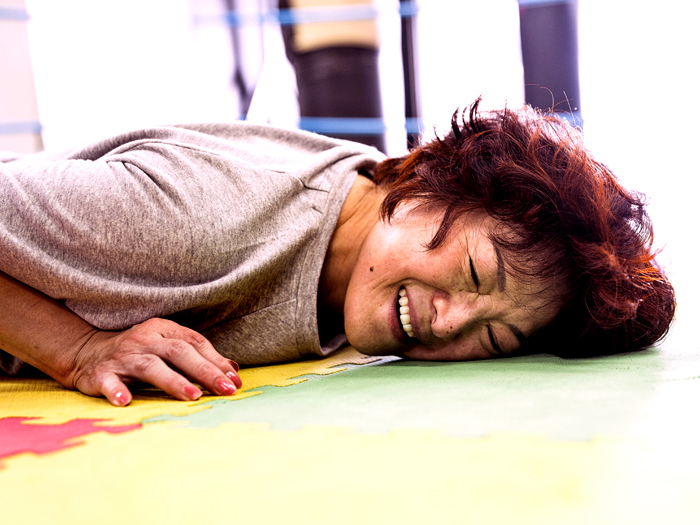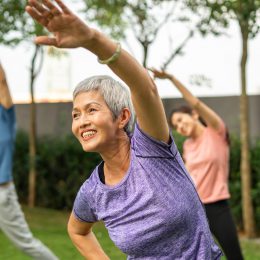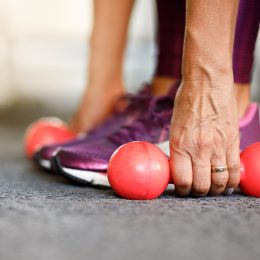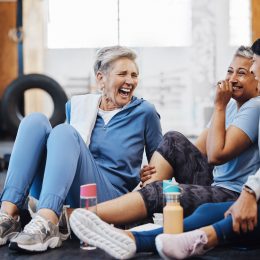I’ve Never Exercised. Is It Too Late to Start?
The short answer is no. But there’s more you should know before jumping into your first workout.

Coming up with excuses to skip a workout is easy: You don’t have time, you’re tired, or you simply don’t know what to do once you step into a gym.
Excuses like these—and many more—are a big reason why 28 percent of adults age 50 and older are physically inactive. Reminder: The Centers for Disease Control and Prevention (CDC) recommends that adults exercise moderately for at least 150 minutes of per week.
But what if you’re finally ready to ditch the excuses and commit to regular exercise? Is it too late?
Nope. It’s never too late to start exercising.
“If you’ve become interested in taking care of yourself and trying something new, feed that, and it will flourish,” say fitness expert David Jack.
Moving for any amount of time—even five minutes, if that’s what you can do to start—helps your health, according to the latest fitness guidelines. And the more you do, the more benefits you get over time, including better heart health, mental sharpness, and reduced risk for chronic diseases like diabetes or even cancer.
Here are the three steps to take to safely and successfully transition from couch potato to gym regular.
Step #1: Talk to Your Doc
Before you start any new exercise program, it’s always a good idea to talk to your doctor. Factors such as your heart and joint health can influence what types of exercise are safe and healthy for you.
What if you already have a health condition? Physical activity is safe—and beneficial—for almost everyone, including people with diabetes, arthritis, and osteoporosis, according to the latest fitness guidelines. The key is working with your doctor to find the right plan for you.
Once you have your instructions for safe exercise, taking group classes led by instructors or working with a certified personal trainer can help you learn proper form and gain confidence in your exercise abilities. Tell instructors and trainers about any conditions, injuries, or concerns you have so they can tailor moves for your needs.
This beginner’s guide to the gym is also packed with useful tips. And if you’re not able to get to a gym, you still have plenty of fitness options. Find strength, flexibility, and walking workouts for all fitness levels on the SilverSneakers GO app (free, iOS and Android).
Step #2: Ease into Everything
“Start smart,” Jack says. “Do less, meaning do half of what you think you’re capable of in the amount, intensity, weight, or speed.”
Why? If you go full speed ahead, you won’t be able to feel how your body is actually reacting to certain movements, Jack explains, and that can quickly set you up for injury.
For example, if you try to do a box jump, fumble on your landing and twist your knee, there’s a significant chance you won’t bounce back if you tear a ligament.
Subscribe to our newsletter
It's quick and easy. You could be one of the 13 million people who are eligible.
Already a member? Click to discover our 15,000+ participating locations.
Follow Us
“Your body doesn’t heal as efficiently as it did when you were 20, 30, or even 40,” Jack says. “When you take things slowly, you can assess how your body feels both during your workout and one or two days after, when you’re most likely to experience any soreness or pain.”
Step #3: Don’t Compare Yourself to Others
Your body is just at a different level when you’re starting from scratch, Jack says. “Someone who begins gymnastics at four years old will always be able to perform more intricate flips with ease than someone who is starting at 30.”
Your fitness journey is unique to you, so avoid comparing your progress to someone who may have been exercising for a longer period of time, even if you’re the same age.
“There is something to be said for having a foundation of movement, fitness, joint capacity, strength, and a brain-body connection,” Jack says. “It’s hard to make up for that when you start later in life, but that doesn’t mean you can’t do it—it just means you need to proceed with caution.”
A better idea: Check in with yourself on a regular basis, and celebrate your personal milestones. Can you walk even a few minutes longer than you did when you started? Do you feel less winded doing chores or running errands? Notice that your pants fit a little better, or you feel less pain in your back, hips, and knees? All of these successes count!
Take Your Favorite SilverSneakers Classes Online!
SilverSneakers members can access live fitness classes and wellness workshops through SilverSneakers LIVE. See the latest schedule and RSVP for classes here.
Not a member? If you have a Medicare Plan, it may include SilverSneakers—at no additional cost. Check your eligibility instantly here.




